In April and May 1945, photographer Éric Schwab and writer Meyer Levin embarked on a heartbreaking journey from Paris to Prague through the remnants of Nazi-occupied Europe. Their mission was both professional and deeply personal: Levin wanted to document what remained of Jewish life in Europe, while Schwab was searching for his mother, Elsbeth, who had been deported in 1943. Their journey took them into the heart of Nazi Germany's evil, from Ohrdruf to Buchenwald, Dachau and Theresienstadt.
This post and its related podcasts are also available in Italian and German:

In search of light, through the heart of darkness.
By early April 1945, it was clear to many that the war in Europe was nearing its end. From the east, Soviet troops had reached Silesia and were preparing to cross the Oder, pushing relentlessly toward Berlin. In the west, Allied forces had already crossed the Rhine and were now encircling the German army in the Ruhr—a final confrontation that would shatter the last remnants of organized Nazi resistance.
Between these two fronts stretched a landscape of devastation and uncertainty.
German cities lay in ruins, entire blocks reduced to rubble. Roads and bridges had been destroyed or abandoned. Outside urban centers, the countryside was filled with a mass of displaced humanity: surrendering soldiers, refugees fleeing the advancing Soviets, civilians in search of shelter, and former prisoners and forced laborers wandering with no destination. Hidden from sight but tragically present were the death marches—groups of concentration camp prisoners forced to move across Germany, often under brutal conditions, as the Nazis sought to erase the evidence of their crimes.
This was the broken terrain through which a single military Jeep made its way—not as part of any military operation, but on a personal mission. Two men rode inside it: Meyer Levin, an American writer and journalist working for the Jewish Telegraphic Agency, and Éric Schwab, a French-German photographer from Agence France-Presse.
They had departed from Paris with distinct but deeply intertwined goals. Levin had returned to Europe to document the fate of European Jews after twenty years of persecution and five years of total war. Schwab, while photographing the crumbling Nazi regime, was also looking for something heartbreakingly personal—his mother, who had been deported to Theresienstadt in 1943.
Their journey would take them deep into the aftermath of the Holocaust.
What they witnessed—and captured with camera and notebook—would become part of the world’s first confrontation with the scale of Nazi barbarity. It was a journey through the heart of darkness. But also, perhaps, a journey in search of light.
From Paris to the front.
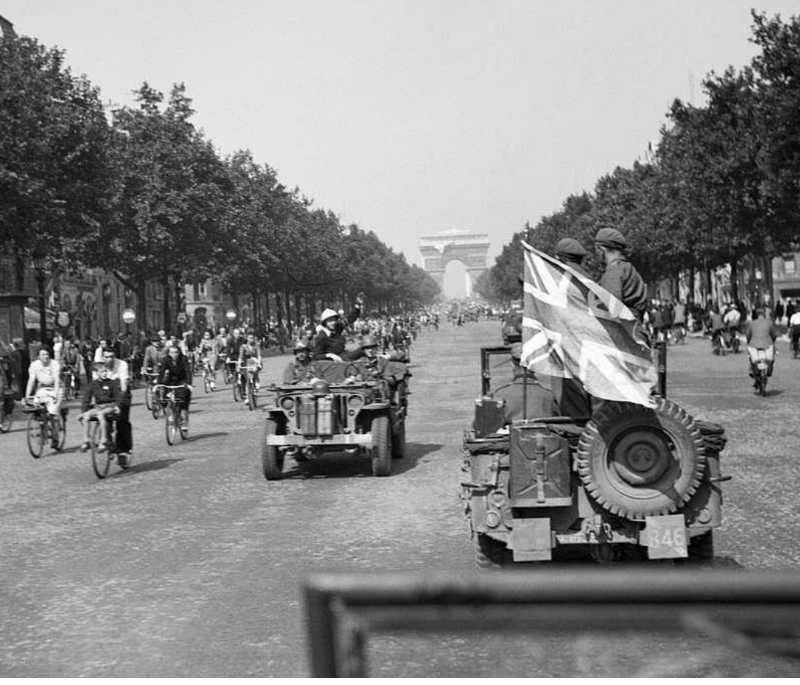
In Paris of spring 1945, the war in Europe was not yet over—but the end was finally in sight. The French capital, recently freed from Nazi occupation, had become a kind of open-air newsroom and gathering place. Military personnel, journalists, photographers, artists, and writers converged here—some to report on the war’s final stages, others to pick up the fragments of a lost world.
Among them were two men whose paths had just crossed—and whose missions would soon become inseparable.
Meyer Levin, a Jewish-American journalist with literary ambitions, had arrived in Paris in September 1944, just in time for the Jewish New Year. His first dispatch, filed on the evening of Rosh Hashanah, described how the city’s synagogues had come alive again, filled with people listening to the potent call of the shofar—a sound that had been forbidden under German rule. Levin was writing for the Jewish Telegraphic Agency (JTA). His mission: to trace the survival—and destruction—of Jewish communities across Europe, to seek out the “remnants of the people of Israel.”
Éric Schwab, born to a French father and German-Jewish mother, was in Paris as well. His early life had been shaped by multiple identities, and by exile. After his mother returned to Germany with her new husband, Schwab had remained in France. It was this twist of fate that saved him. In 1944, Schwab joined the fight to liberate France, and later became part of the new Agence France-Presse photojournalism team. By October, he had secured accreditation with the American army, and it was through this connection that he met Levin.
The two quickly became friends - and partners in one of the most shocking journalistic journeys of the twentieth century. They had no detailed plan, but they had a vehicle: a Jeep they named The Spirit of Alpena.
In early April 1945, they left Frankfurt, traveling eastward toward Weimar, following the Allied advance but keeping just far enough behind to report, observe, and bear witness. They didn’t yet know what they would find. But they understood they had to see it.
A journey into the unknown.
By early 1945, Europe was buzzing with rumors of Nazi atrocities. But for many in the West, including reporters and military personnel, the full truth remained obscure.
Even Meyer Levin, deeply immersed in documenting the fate of French Jews, barely registered the liberation of concentration camps in the East. Lublin-Majdanek, the first major camp to be liberated by Soviet forces, was discovered in July 1944. Auschwitz-Birkenau followed in January 1945. Yet, these events received little attention in Western media.
On the Western Front, the only camp discovered before 1945 was Struthof-Natzweiler, located in German-occupied Alsace and liberated in November 1944. But when Allied forces arrived, they found it empty. Like many others, the camp had been evacuated by the Nazis—part of a deliberate effort to eliminate witnesses to their crimes.
This made the job of journalists even harder. With no surviving prisoners and few physical traces, there was nothing to show or verify. Auschwitz remained largely a name—obscure, distant, and terrifying only in whispers. While some intelligence reports had confirmed the atrocities and even sparked internal debates within the Allied command, the political will to act was missing. Historians have since debated why the Allies chose not to bomb the rail lines leading to Auschwitz. But even when the Soviets discovered the death camps, they did not publicize their findings widely.
The Western public remained uninformed.
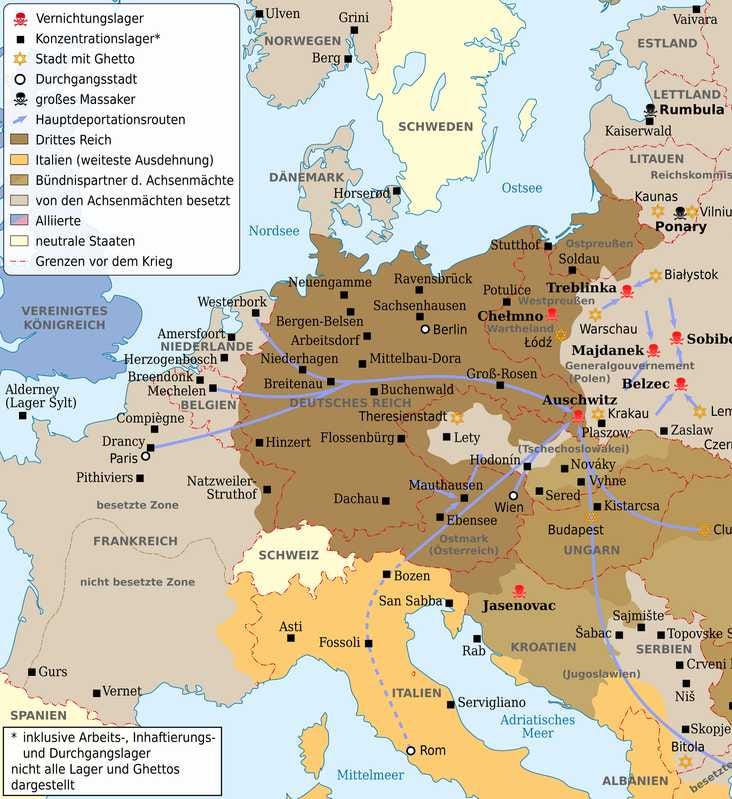
During wartime, the Western press also operated under heavy censorship.
Newsrooms lacked resources to verify reports from the Eastern Front. Editors hesitated to publish unconfirmed information that might either raise false hopes or cause anguish among families awaiting news of missing relatives in Europe. This silence explains why the shock was so profound when visual proof of the camps finally appeared. Until then, there had been no firsthand reports. No bodies exposed to the global public.
That changed on April 4, 1945, with the discovery of Ohrdruf—a Buchenwald subcamp in Germany.
For the first time, American troops—and accompanying reporters—entered a Nazi camp where death was still present. This time, there were corpses. There were survivors. There was no denying what had happened. Everything changed that day.
Ohrdruf: “now we knew”.
“We knew. The world had vaguely heard of it. But until now no one of us had seen this. Even this morning we had not imagined we would look on this. It was as though we had penetrated at last to the very center of the black heart, to the crawling inside of the heart of evil. … Now we knew. Nothing afterward told us more. Bergen Belsen, Dachau - we became specialists.”
Meyer Levin, In Search. An Autobiography, 1950
In early April 1945, Meyer Levin and Éric Schwab set off together on their Spirit of Alpena jeep. The army had granted them a rare permission: they could drive without a military escort. It gave them freedom, and they used it to chart their own path through the heart of collapsing Germany.
On April 4th, as they passed through Gotha in Thuringia, they began to notice strange shapes along the road: emaciated, skeletal refugees with shaved heads and eyes like wounds. It was a sight unlike any they had encountered before.
That night, in the nearby town of Ohrdruf, one of these desperate men approached their parked jeep. He was agitated, speaking in fragments of German—“Poles, Poles!”—and pleaded with them to follow. He wanted to show them a place where he had been imprisoned. There were no more Germans, he said. The SS had fled. He led them to the camp’s edge, but the two journalists hesitated. It was dark. It could be a trap. They returned the next morning, once the area was secured by American forces.
On April 5th, Levin and Schwab crossed through the barbed wire gates of Ohrdruf Camp. What they saw would mark them forever.
Twenty-nine corpses lay in a circle, dressed in striped camp uniforms. They had been executed at close range, a bullet to the back of the head. Nearby, a storage shed held a pyramid of naked, stiff bodies. They had been doused in disinfectant. “Stacked like firewood,” Levin would later write.
See also: Buchenwald Memorial Website
Photos: US Holocaust Memorial Museum
Ohrdruf was a subcamp of Buchenwald, part of the Nazi system of forced labor for the armaments industry.
Prisoners drilled tunnels and worked in underground rocket factories under conditions that guaranteed death in weeks. As the American troops advanced, the SS began evacuating the camp. At least 12,000 prisoners were sent on death marches toward Buchenwald on April the 2nd; 1,500 died before reaching it. The SS left their corpses unburied or tried to burn them.
Ohrdruf wasn’t discovered on purpose. The Allies weren’t looking for the camps. But when they found it, everything changed.
Colonel Hayden Sears, commander of the 4th Armored Division, took swift action. The town’s mayor, Albert Schneider, was forced to visit the camp. The next day, he and his wife died by suicide. The local population followed. Later, the resident population would be required to visit and help burying the corpses.
But no corpses were moved before April 12th, when General Dwight D. Eisenhower came to see Ohrdruf for himself.
He walked among the corpses, the barracks, the piles of bodies. What he saw filled him with dread—not only for what had happened, but for what might happen if it were ever forgotten. He ordered all nearby units to visit the camp. He invited journalists and officials from every Allied country. There would be no censorship. And wrote:
“I made the visit deliberately, in order to be in position to give first-hand evidence… if ever, in the future, there develops a tendency to charge these allegations merely to propaganda.”
Ohrdruf became an international news event. Photographs and reports were sent around the world.
Yet it would not remain in memory. The Soviet army took over the area in July 1945, and the Camp was razed. Two commemorative stones erected during this period pay tribute to the dead. In 1993, the Federal Republic of Germany took charge of the grounds. Today, the name is barely remembered, though at the time of discovery, Ohrdruf was synonymous with bestiality. And yet, for Schwab and Levin, the journey into the abyss was only just beginning.
Buchenwald: “Comrades, we are free!”.
One day before Eisenhower’s visit to Ohrdruf, on April 11, 1945, American troops uncovered another subcamp of Buchenwald: Mittelbau-Dora.
There, they found over 3,000 corpses and approximately 700 survivors. The residents of Nordhausen were ordered to dig graves for the dead. Éric Schwab and Meyer Levin did not witness this discovery — they were still behind, traveling in their jeep.
Meanwhile, on that same day, French and American troops arrived at the main Buchenwald camp. No journalists or photographers were present.
Just the day before, the SS had evacuated thousands of prisoners and announced that the camp would be entirely cleared by April 11. As in all camps, Heinrich Himmler had ordered that evidence of atrocities be destroyed. Buchenwald’s commandant, Hermann Pister, prepared to comply.
But Buchenwald was too large, and the Americans were advancing too quickly. There were 48,000 prisoners still in the camp: 23,000 in the overcrowded main barracks; 18,000 crammed into the windowless “Small Camp”; 6,600 more Jewish prisoners in the nearby weapons factory.
On April 11 at 9 a.m., US tanks could be heard approaching from the north. Commandant Pister summoned two prisoner representatives to the camp gate: Hans Eiden, a German Communist interned since 1939, and Franz Eichhorn, imprisoned since 1938 and a member of the internal resistance. Pister informed them that the SS was withdrawing and handed control of the camp over to Eiden. At 10 a.m., the camp loudspeakers crackled: “All SS members out of the camp immediately!”
Within two hours, almost all SS personnel had fled. A few were captured by the camp’s internal resistance. That resistance had been quietly organized since 1944, equipped with smuggled weapons and trained for this moment. It quickly took control of the camp. At 3:15 p.m., Hans Eiden announced over the loudspeaker:
“Comrades, we are free! The SS has fled.”
”Keep calm in the camp, we will provide you with further information.”
Eiden raised the white flag. The clock on the camp’s main gate was striking 3:15 — the exact moment of liberation. Visitors to Buchenwald today still see that time displayed on the gate’s tower.
Roughly two hours later, at around five o´clock, two French soldiers arrived in a jeep, followed shortly by American troops.
When Schwab and Levin heard about the liberation of Buchenwald, they turned their vehicle around and headed straight for Weimar. They arrived after nightfall on April 12. On the morning after, they reached Buchenwald.
One of Schwab’s first photographs captured the camp’s iron gate — from the inside. The inscription on the gate read: “Jedem das Seine” – “To each his own”. The words had been designed in 1937 in an austere Bauhaus style by Franz Ehrlich, a Communist architect and prisoner in Buchenwald. In Schwab’s image, the inscription is silhouetted by the morning light. Behind the gate, one sees the outlines of American tanks, military vehicles, and liberated prisoners.
Freedom. At last.
The gate of Buchenwald camp, with the words 'Jedem das seine' (To each what he deserves) ➜ original photo on correspondent.afp.com
Inside Buchenwald.
When Schwab and Levin entered Buchenwald, they immediately sensed they were stepping into something far more complex and terrifying than a single concentration camp. This was a network — highly organized, industrial, and deeply embedded in the Nazi war machine.
Buchenwald had been established in 1937, before the war, as part of Germany’s military preparations. It became a hub for forced labor. Inside the camp, the SS built an armaments factory called the DAW (Deutsche Ausrüstungswerke). Not far from it, a sprawling industrial area known as the Gustloff Works was established, featuring machine factories and workshops that contributed to the production of V2 rockets and rifles. Railway tracks connected the camp directly to Weimar — a city long associated with German classicism.
Conditions across the Buchenwald system varied significantly. In the main labor camp, where prisoners worked in the weapons factories, the living situation was grim but somewhat structured. Prisoners often had a place to sleep, sometimes even a bed, and a place at the table. “Here,” wrote Meyer Levin, “they retained a human-like appearance.”
But the Little Camp, also known as the Kleines Lager, told a different story.
This is where transports from Auschwitz were arriving. There was no work — only starvation and death. The people here were nameless. What Éric Schwab photographed in this section of the camp was not life, but the struggle to remain alive — or the moment just before death.
Two of his most iconic photographs from Buchenwald depict an emaciated prisoner lying on a bunk, lifting his skeletal head, a food bowl beside him, looking at the free men watching him. The image was circulated around the world.
Photos: AFP.COM “Eric Schwab, photographing the unspeakable”
As the days passed, Buchenwald began to turn into a ritual site. A macabre form of education took shape: former prisoners, many of whom had belonged to the underground resistance, led American soldiers, journalists, and Allied delegations through the grounds. They showed the visitors mass graves, the crematoria, and the instruments of torture. Photographers arrived in large numbers, focusing their lenses on the Little Camp and its haunting human remains.
Meyer Levin, however, chose a different path. While Schwab documented what he saw, Levin gathered names.
He walked through the camp writing down as many names as he could, determined to remember, to trace, to connect. The rumor spread quickly among survivors: “He’s interested in Jews.” Many gathered around Levin’s jeep, writing their names directly on the vehicle’s body, hoping he might find news of their families on his next stops.
There were children in Buchenwald. Not many, but a few — and their survival stories would later become part of literature.
One of them was Josef Schleifstein, a four-year-old boy born near Warsaw. He had survived multiple camps thanks to his father’s ingenuity and courage — including hiding him in a sack during the final evacuations. Levin included Josef’s story in his memoir In Search, but the tale was mostly forgotten until 1997, when it became the inspiration for Roberto Benigni’s film Life is Beautiful. Another child survivor, Stefan Jerzy Zweig, inspired Bruno Apitz’s novel Naked Among Wolves, a fictionalized account of resistance and protection inside Buchenwald. The book became a bestseller in East Germany and was later adapted into films, first in 1963 and again in 2015, broadcast internationally.
In the spring of 1945, however, these were not yet stories. They were names. And Schwab and Levin were trying to save them from disappearing.
See also: Buchenwald / Events to mark the 80th anniversary of Liberation
On the road to the Elbe.
After the horror of Buchenwald, Meyer Levin was drained—emotionally, morally, existentially. He no longer believed there was a future for Jewish life in Eastern Europe. Villages had been erased. Borders were about to be redrawn. In too many places, the survivors would not be welcomed back. Could anything resembling European Jewry still exist?
But Levin did not stop. Éric Schwab, his photographer and companion on this journey, had not yet found his mother. So the two pressed on, through a landscape still reshaping itself in the last days of war.
On April 18, they arrived in Leipzig. Once a city of music and publishing, Leipzig now lay in ruins. It was there that they heard about a recent massacre—just two days prior, northeast of the city near the village of Thekla.
In a factory where inmates from Buchenwald had been forced to build aircraft wings, the SS had begun an evacuation on April 16. Those too weak to walk were sealed into one of the factory buildings. At noon, the building was deliberately set on fire. Bazookas and machine guns were used to finish the job. Those who tried to flee were shot at the barbed wire fence.
When Levin and Schwab reached the site, they found what Levin described as a “moonscape” of bones, charred remains, and unrecognizable objects. The smell was overpowering. But it was the silence that truly shook them.
This horror reignited their sense of urgency. Time was running out—not just for documenting, but for understanding. In a matter of days, American and Soviet troops would meet on the Elbe River. The world was shifting.
As they drove toward the Elbe, Levin and Schwab encountered a human tide—an exodus moving in the opposite direction. Families dragging carts, women pushing strollers filled not with children but with whatever they could carry. The roads were clogged not by war but by people fleeing it.
Small groups of German soldiers also appeared, no longer defiant but desperate to surrender. Anything to avoid falling into Soviet hands. As Levin put it:
"Now we are encountering masses of refugees, women with prams full of packages, families pulling handcarts road along the river.” […] "For the Germans were now obsessed with only one thing: not to fall into the hands of the Soviets, whose revenge, as they thought in view of their own crimes in the East, could only be cruel. They relied on the Americans protecting them."
From Dachau to Austria.
The liberation of Dachau followed a pattern already seen at other camps: it was not part of any plan. It was not a war aim. It was not expected. In the final days of April, American troops were pushing south—toward Bavaria, toward Austria.
On their way to Munich, they stumbled into the darkest corners of the war. On April 29, 1945, just 20 km north of the city, a chilling discovery halted their advance.
Along a railway line, they found a train with forty open wagons. Inside were more than two thousand corpses in various stages of decomposition. The train had come from Buchenwald and never reached its intended destination—Dachau. When the soldiers arrived at the camp itself, the memory of what they’d seen along the tracks was still vivid. Overcome by rage, some fired at the remaining SS guards—even as they raised white flags in surrender.
Éric Schwab was there. His photos of the train, the dead, and the barely living would become some of the most iconic images of the war’s end.
Meyer Levin, meanwhile, began counting. He listed names, identities, origins. He estimated that Dachau held at least 31,000 surviving prisoners. Among them: 3,000 Jews from across Europe, about 200 women, and a few young boys. The U.S. Army also found some 4,500 evacuees in the surrounding woods and fields—survivors of forced marches.
Schwab photographed everything: carts full of corpses, prisoners collapsed in the mud, others staring directly into his lens. Many were Hungarians from Auschwitz, the infamous numbers tattooed on their forearms. Nowhere else in the camp system had tattoos been used—another sign of the horrors that had followed these men across Europe.
He also documented the exterior of the gas chambers. In one photo, an American GI stands beside the warning sign: “Caution! Gas! Danger to life! Do not open!” The skull symbol looms beside him.
Other photographers were present. But Schwab’s images captured something more intimate, more human.
His portraits weren’t just documentation—they were testimony. The prisoners looked straight into the camera, and through it, into the eyes of the world. Printed in magazines and newspapers, they pierced hearts. They made people cry. This camp, more than others, managed to breach the distance between horror and home.
Then, the two journalists moved on, accompanied by the news of Adolf Hitler's suicide on April 30.
On the road to Innsbruck, they encountered yet another exodus. The roads were jammed with people fleeing collapse—handcarts, horses, bicycles, families on foot, retreating soldiers. Former prisoners, German civilians, refugees from Silesia and Bohemia. Everyone was running. But some still resisted—diehard Nazis refusing to surrender.
On May 3, the Americans entered Innsbruck. In the following days, the German military crumbled in waves of capitulation.
Levin and Schwab made one last detour. They visited the liberated castle of Itter, where high-profile prisoners from occupied countries—French ministers, European aristocrats—had been held. Potential hostages for negotiation.
It was a strange place, almost surreal. But Schwab and Levin barely paid attention. They weren’t hunting for elegant tales. Not that kind of story. Levin was consumed by the fate of a people and its culture. Schwab had only one thought left.
Find his mother.
Alive.
This was their final mission.
Terezín, Theresienstadt.
"The last mission of our press jeep Spirit of Alpena in war-torn Europe was to find the mother of AFP photographer Éric Schwab." Meyer Levin
By now, the war was winding down. The fighting had been reduced to a small zone in Czechoslovakia, around Prague and the Theresienstadt camp. But politics stood in the way: American troops were only two hours from Prague, yet forbidden to advance by the Yalta agreements. That final stretch was Soviet territory.
Éric and Meyer couldn’t accept that. They went to Pilsen, hoping to find another way. When that failed too, they made their own path—jeep loaded, hearts full, stopping at every village to ask if the roads were clear. When they approached Prague, a barricade stopped them—but it wasn’t German. It was the Czech resistance, who welcomed the two Americans like heroes.
It was May 7th, one day before Germany’s surrender.
From there, they turned toward Theresienstadt. On the way, near Carlsbad, they encountered a sight unlike anything they’d seen: an endless exodus. A river of people surging west, trying to escape Soviet-occupied territories before the lines hardened. German civilians, Czech refugees, wounded soldiers, whole hospitals on wheels, families stacked into carts pulled by horses and cars, trucks, anything that could move. It was grotesque, overwhelming, impossible to forget.
Theresienstadt, or Terezín in Czech, was waiting at the end of that road.
Part model camp, part ghetto, part deception, it had been used to gather “prominent” Jews: World War I veterans, intellectuals, artists. It was used for propaganda, for a Red Cross inspection in 1944, but from 1942 onward it became a transit hub to extermination sites.
140,000 passed through Theresienstadt. 90,000 were deported to the east. 33,000 died inside the ghetto. Roughly 30,000 survived.
When the jeep rolled into the camp, the word spread like fire: “Americans.” A crowd formed. Schwab and Levin separated to explore. Éric had only one clue: a postcard his mother had written to friends in Germany, saying she worked with children. He went to the school building. Opened the door. She looked up, surrounded by children. She said his name twice, to make sure it wasn’t a dream.
When Levin returned to the jeep, she was already seated inside, wearing a white nurse’s cap. Silent.
There was no paperwork, no clearance to request.
They simply drove away.
In Pilsen, in a house confiscated from the Germans, they improvised a meal from military rations. She touched the plates, the tablecloth, everything—just to make sure it was real. When shown her room, with a proper bed and pillows, she cried. Éric found a stack of women’s clothes. She refused them. “I don’t want anything from anyone.”
At the military press camp, she was welcomed like a queen. That night, it felt like peace had finally arrived. Soon after, the two men parted ways. Their long road through the heart of darkness had come to an end.
And amidst the horror, the one story they carried with them had a different ending.
A mother was found.
A son came back.
And despite everything, in a world of broken stories, this one—ended in light.
Epilogue: the jeep and a Torah.
Éric Schwab and his mother left Europe for the United States in June 1946.
In New York, he worked as a correspondent for AFP (1945–49), later collaborating with organizations such as UNESCO and the World Health Organization. His recognition as a war photographer came slowly—his photos were often credited only to AFP, without his name. Today, Schwab’s work is considered essential to the visual documentation of the Holocaust. His mother, Elsbeth, who was 56 when she emigrated, settled in America but died in 1962 during a visit to friends and family in Germany.
Meyer Levin, still haunted by the fate of European Jews, continued to document it before coming back to the USA in June 1945.
After rejoining his military unit in Leipzig, he met Rabbi Lefkowitz, a chaplain with the U.S. Army. They spoke at length about the future of Jewish life in Europe. The rabbi asked Levin to perform one final mission: to return a Torah scroll, recovered from the ruins of a Cologne synagogue, to the remaining Jews in that city. The scroll had been buried since Kristallnacht in 1938.
Levin drove to Cologne and delivered the Torah to the survivors.
In his autobiography In Search, Levin reflects on this act as a potential “happy ending”—a symbolic rebirth of Jewish life in Europe. But for him, that was not the case. The Jews of Cologne, like so many others across the continent, had been destroyed. “Their history was at an end,” he wrote.
Levin never stopped engaging with Jewish history and identity—as an author, a dramatist, and a passionate Jew. The memory of what he had witnessed in the camps never left him:
“Most of the great stories that agitated me while I was a war correspondent, I have forgotten. But in the two years after the war, one of the stories did not stop growing—until I realized it contained everything I had learned from the war.”
Meyer Levin, In Search
Books
This story is scattered across books, articles, and memories. The most detailed first-hand account comes from Meyer Levin’s autobiographical book In Search (1950), where he recounts in vivid detail his and Éric Schwab’s journey from Paris to Prague in 1945. For many years, Levin was largely forgotten in Europe. By chance, I first heard about In Search in 2023 at an event organized by the German-Israeli Society, held on 27 September at the Jewish Community Centre in Fasanenstraße, Berlin.
In 1995, Levin’s son, Mikael Levin, retraced the path his father and Schwab had taken through postwar Europe. He photographed the same locations and created a powerful project titled “War Story”, which brought together images and text in both an exhibition and a book.
More recently, in 2015, French historian Annette Wieviorka used the journey of Levin and Schwab as a narrative thread to recount how Allied troops discovered the Nazi concentration camps. Her book, originally published in French as “1945: La Découverte”, is both thoroughly researched and emotionally engaging. In 2021, it was translated into German under the title “1945: Als die Amerikaner die Lager entdecken”. As far as I know, the book has also been translated into Spanish—but not into English or Italian. I relied on this book to reconstruct Levin and Schwab's journey.





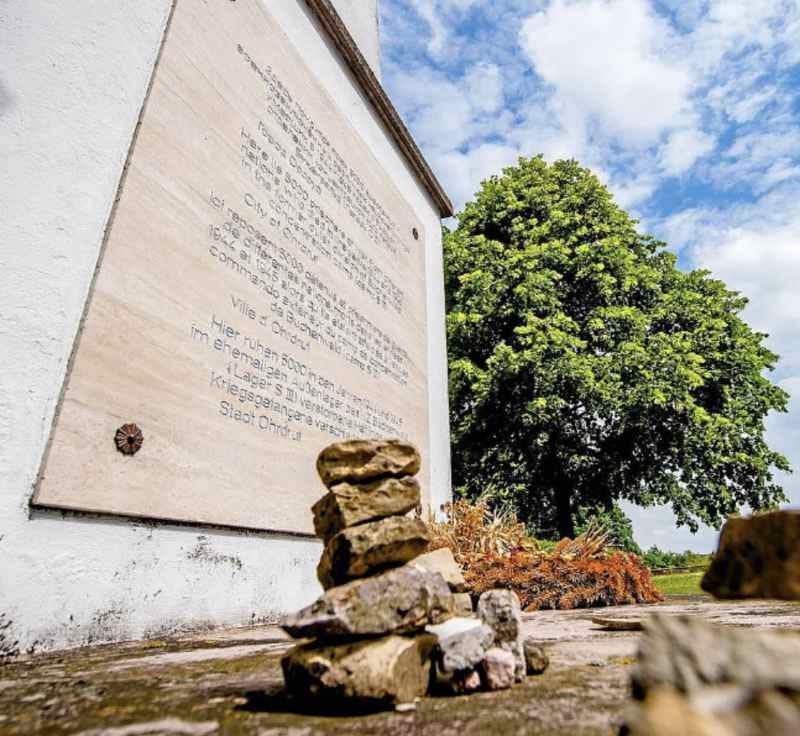
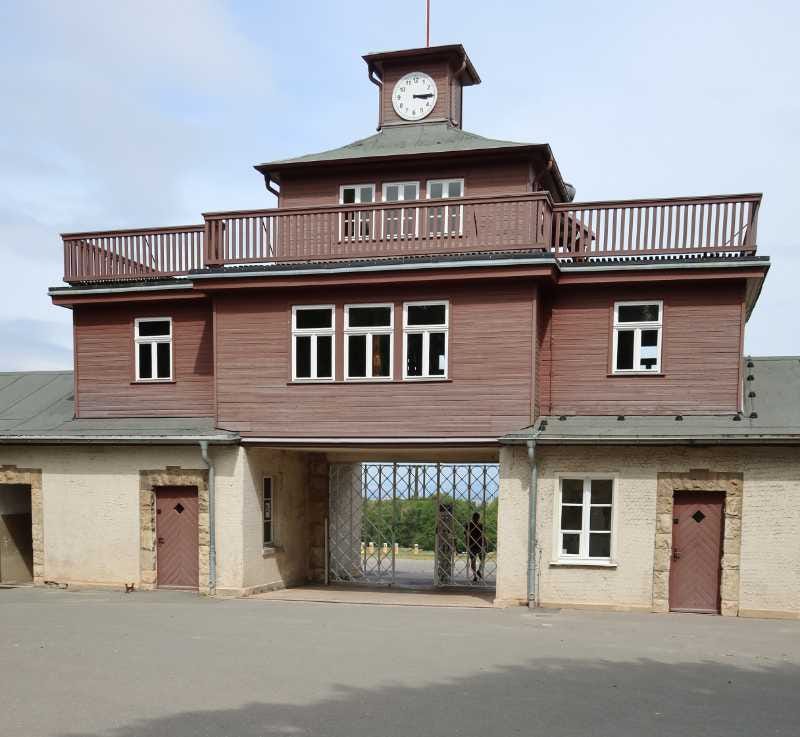
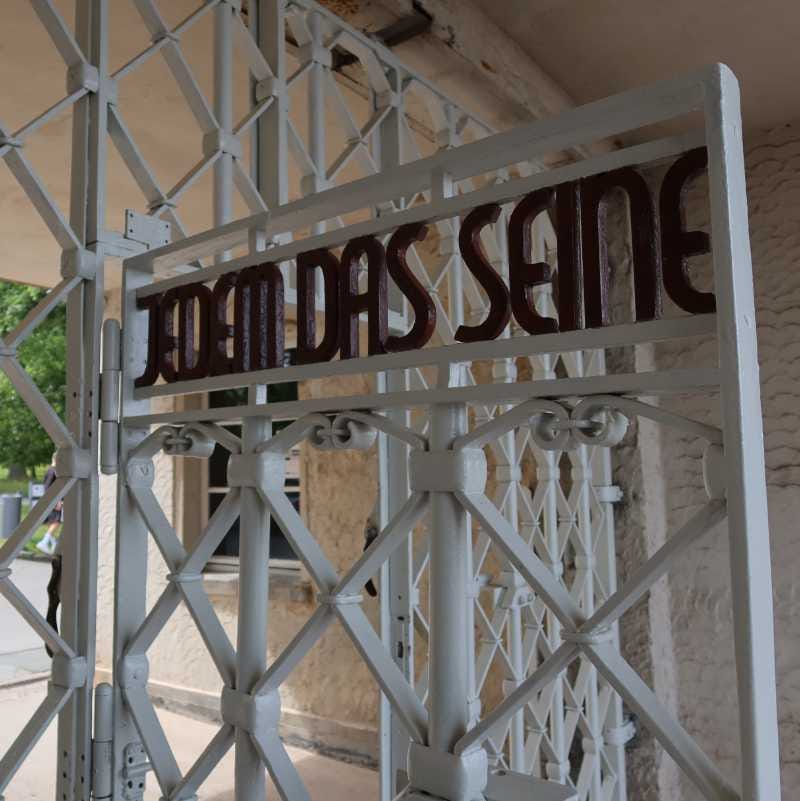





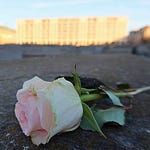




Share this post